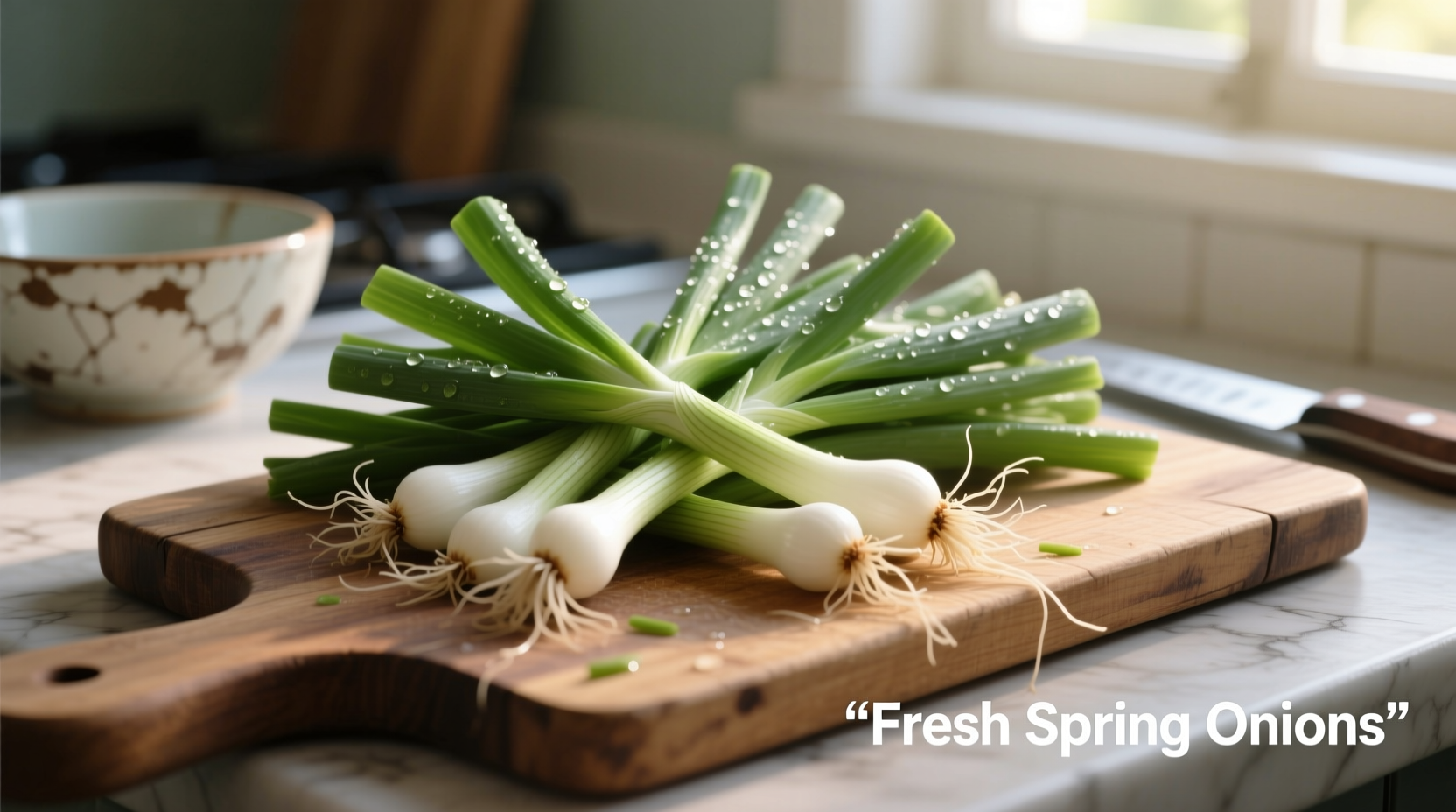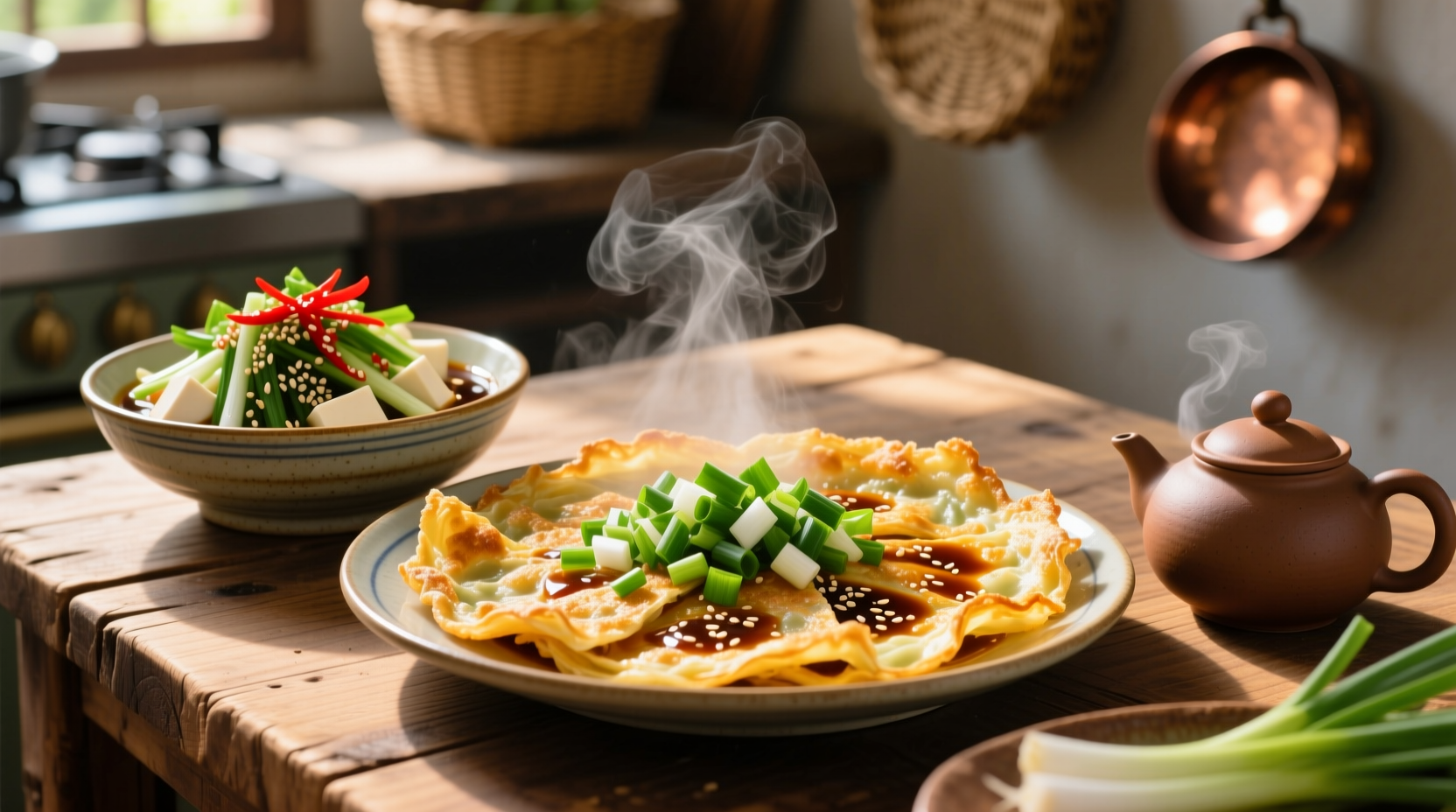Spring onions deliver vibrant flavor to dishes worldwide. The white bulb offers sharp onion notes while green tops provide milder taste. Chefs consistently use both parts: whites in high-heat cooking for depth, greens as fresh garnish. Proper selection involves firm bulbs and crisp greens. Store unwashed in refrigerator crisper for up to 5 days. These versatile alliums feature in Chinese pancakes, Korean pancakes, Mexican salsas, and French omelets. Mastering spring onion techniques elevates everyday cooking with minimal effort.
Unlock the full potential of spring onions with these chef-tested techniques and globally inspired recipes. As Antonio Rodriguez, a culinary professional with extensive experience in flavor chemistry, I've discovered that understanding how to properly handle this humble ingredient transforms ordinary meals into extraordinary dishes. Whether you're a beginner cook or seasoned home chef, these practical methods will help you maximize flavor in every dish.
Why Spring Onions Deserve a Permanent Spot in Your Kitchen
Spring onions (Allium fistulosum) differ from regular onions with their slender shape and mild flavor profile. Unlike mature onions that develop complex sugars through storage, spring onions maintain a delicate balance between pungency and sweetness. This unique characteristic makes them indispensable across global cuisines. Professional kitchens keep them stocked year-round because they add instant freshness without overwhelming other ingredients.
| Spring Onion Component | Flavor Profile | Best Cooking Applications | Storage Duration |
|---|---|---|---|
| White bulb (lower 2-3 inches) | Sharp, pungent, onion-forward | Sautéing, stir-frying, soup bases | 5-7 days refrigerated |
| Light green section | Moderate flavor, slight bitterness | Medium-heat cooking, braising | 4-5 days refrigerated |
| Dark green tops | Mild, grassy, fresh | Raw garnishes, finishing touches | 3-4 days refrigerated |
Mastering Spring Onion Selection and Preparation
Select spring onions with firm, crisp bulbs and vibrant green tops without yellowing. Avoid limp or slimy specimens. The ideal diameter ranges from pencil-thin to half-inch thick. Thicker varieties work better for grilling while thinner ones excel in raw applications. Always wash thoroughly in cold water to remove soil trapped between layers.
Proper cutting technique maximizes flavor distribution. For stir-fries, cut whites diagonally into 1-inch pieces to increase surface area. Slice greens thinly on a sharp angle for elegant presentation. When recipes specify "spring onion whites," they mean the bottom 2-3 inches including the root end. The light green transition zone works well in soups and stocks.

Global Spring Onion Dishes You Need to Try
Spring onions feature prominently in culinary traditions worldwide. In Chinese cuisine, scallion oil transforms simple noodles into restaurant-quality dishes. Japanese chefs create delicate chrysanthemum cuts for seafood presentations. Mexican cooks blend them raw into fresh salsas for brightness. French chefs incorporate them into fines herbes mixtures for classic sauces.
Asian Spring Onion Specialties
Chinese spring onion pancakes require precise layering of minced spring onions between dough sheets. The key technique involves coiling the dough after spreading spring onion oil, creating flaky layers when cooked. Korean pajeon (spring onion pancake) achieves perfect crispness by using ice-cold batter and high-heat cooking. Japanese negimaki features spring onions wrapped in thin beef slices, grilled with a sweet-savory glaze.
Western Culinary Applications
French cuisine uses spring onions in beurre blanc sauces where their mild flavor complements delicate fish. In Mexican cooking, white spring onion varieties work best in raw salsas due to their sharper bite. American Southern cooking features them in cornbread and relishes where their freshness balances rich flavors. Proper technique involves adding whites early in cooking and greens at the end.
Avoid These Common Spring Onion Mistakes
Many home cooks waste half the spring onion by discarding the greens. Both parts offer distinct culinary benefits when used appropriately. Another frequent error involves improper storage - spring onions deteriorate quickly at room temperature. Never wash them before storage as moisture accelerates spoilage. When cooking, avoid overcooking the greens which turns them mushy and eliminates their fresh flavor.
Professional chefs follow these context boundaries for optimal results: use white parts in high-heat applications (350°F+), light green in medium-heat cooking (300-350°F), and dark greens exclusively raw or as last-minute additions. This temperature-based approach preserves each component's unique characteristics. For raw applications, slice greens paper-thin to maximize surface area without overwhelming the dish.
Creative Ways to Use Spring Onions Beyond Basic Cooking
Transform spring onion scraps into flavorful oils by simmering whites in neutral oil for 20 minutes. Freeze excess greens in ice cube trays with water for future soups. Create vibrant spring onion pesto by blending greens with nuts and Parmesan. The root ends can grow new spring onions in water - simply place in a glass with the roots submerged. This regrowth method provides continuous harvest for kitchen use.
Seasonal Considerations for Spring Onion Dishes
Spring onions reach peak flavor in early summer when they're young and tender. During winter months, select varieties with thinner stalks for better texture. In humid climates, look for drier storage conditions to prevent spoilage. The USDA Agricultural Research Service confirms that spring onions harvested in cooler temperatures develop sweeter flavors due to increased sugar content (USDA ARS).
Final Tips for Perfect Spring Onion Dishes
Always add spring onion whites first when cooking to develop flavor foundation. Reserve the greens for finishing to maintain their vibrant color and fresh taste. For maximum flavor extraction, slice whites against the grain to expose more surface area. When making stocks, include both parts but remove greens after 5 minutes of simmering. Proper technique ensures you get the most from this versatile ingredient in every dish you create.
What's the difference between spring onions and scallions?
Spring onions develop small bulbs while scallions remain bulbless. Spring onions have slightly stronger flavor and work better for cooking, while scallions excel in raw applications. Both terms are often used interchangeably in recipes despite these botanical differences.
How do I store spring onions to maximize freshness?
Store unwashed spring onions in the refrigerator crisper drawer with roots down in a glass of water, covered with a plastic bag. Change water every 2-3 days. Properly stored, they maintain freshness for 7-10 days compared to 3-4 days when stored dry.
Which part of the spring onion should I use for stir-fries?
For stir-fries, add the white and light green sections first to develop flavor through high-heat cooking. Stir in the dark green tops during the last 30 seconds of cooking to preserve their fresh flavor and vibrant color without becoming soggy.
Can I substitute regular onions for spring onions?
You can substitute regular onions but with adjustments. Use ½ cup finely diced yellow onion plus 2 tablespoons chopped chives for every 4 spring onions. Remember that regular onions require longer cooking time to mellow their stronger flavor compared to spring onions' delicate profile.
How do I grow spring onions at home?
Regrow spring onions by placing root ends in a glass with 1 inch of water. Change water every 2-3 days. They'll regrow in 7-10 days. For continuous harvest, plant root ends in soil 2 inches deep, 2 inches apart. Harvest when tops reach 6-8 inches tall, leaving 2 inches for regrowth.











 浙公网安备
33010002000092号
浙公网安备
33010002000092号 浙B2-20120091-4
浙B2-20120091-4